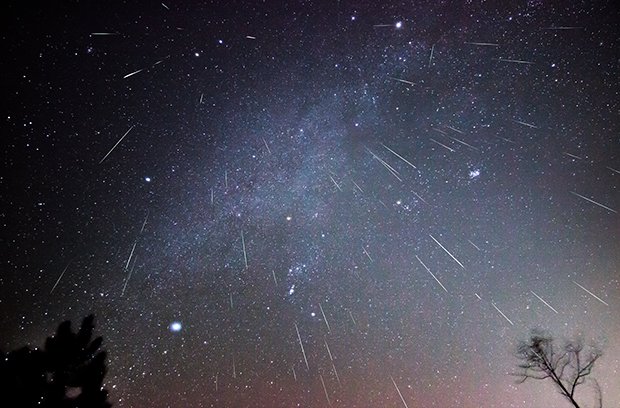If you think you missed the Geminids Meteor shower, think again. Although the peak viewing time for this spectacular show was Tuesday, there is still an opportunity to catch some shooting stars in the December sky.
The Geminids actually lasts from around December 4 through December 17. According to NASA, this shower is considered one of the best opportunities for young viewers since this shower starts earlier in the evening.
- Moon phase: The current moon phase is a waning gibbous with about 68% illumination. That’s going to be a bit of a bummer but you can get out before moonrise at 10:23pm to catch the show before the light from the moon washes out some of the fainter meteors.
- Sky location: The Geminids will seem to come from the constellation Gemini. In fact, this is how the Geminids got their name, from the constellation they seem to emanate from. (According to NASA, the constellation for which a meteor shower is named only serves to aid viewers in determining which shower they are viewing on a given night. The constellation is not the source of the meteors.)
- How many meteors: At its peak yesterday, you could expect to see up to 120 meteors per hour. Tonight most likely a lot less but you can still expect a good show.
- When to watch: The night of Wednesday, December 14 into the morning of Thursday, December 15. The meteor shower will be active all night but experts say the best viewing time is before moonrise at 10:23pm. Most sources say the meteor shower starts around 9pm but others say you can start observing earlier.
- Where do they come from: The Geminids is unique in that the debris causing the meteor shower comes from an asteroid as opposed to a comet. The asteroid is called 3200 Phaethon.
- Where to observe: Find a dark spot or a park and get yourself a chair, a hot cup of coffee (or something a bit, ahem, stronger), and enjoy. NASA says to lie flat on your back with your feet facing south and look up, taking in as much of the sky as possible. After about 30 minutes in the dark, your eyes will adapt and you will begin to see meteors. Be patient – the show will last until dawn, so you have plenty of time to catch a glimpse.
- Equipment needed: Bring warm clothes, the aforementioned hot drink, and a reclining chair. You don’t need a telescope or binoculars as you want to take in the widest view of the sky possible.










